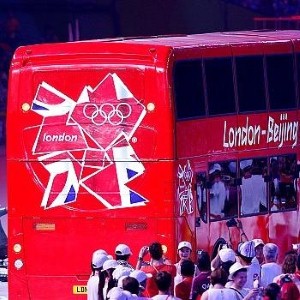Olympics closing ceremony lit up by LED lighting
Athletes biting medals, the reanimated remains of the Spice Girls, Eric Idle… last night's Olympic Games closing ceremony had millions of viewers gripped. But the show wouldn't have really been up to much without the help of LED lighting.
And not just so everybody could see what was going on: lighting was integral to the show. Volunteer gamesmakers, who were thanked as part of the ceremony, appeared in bowler hats with working LED light bulbs on top, supposedly a nod to the old police phone boxes that the TARDIS is based on.
Meanwhile, the culmination of the show saw one of the most breath-taking sights from last night's ceremony, as the whole crowd was transformed by undulating LED panels into the Union Jack flag, a moving bassline readout and various inspirational words and pictures from the Games just gone.
But how did it all work? Good question, very good question. Glad you asked. Well: each of the 70,799 seats in the Olympic Stadium had the nine-bulb panel built into the back of it, attached by a flexible plastic tether. At key moments throughout the ceremony, the crowd held their panel aloft and, controlled by a central lighting system, various displays were put on for the world to see.
It's thought that a significant amount of the opening and closing ceremony budgets went into producing the lighting shows, which made the fans part of the experience, and with the infrastructure in place, whatever events now take place at the Olympic Stadium - from concerts to sporting celebrations - the crowd will be able to take part.
But LED bulbs aren't just useful for illuminating a one-off celebration of running, jumping and swimming. As head of LED manufacturer Cree notes, the uptake of LED fixtures for commercial applications is steady, but homeowners are yet to fully take the plunge when it comes to their residential properties, despite the significant savings.
"We're just not quite there," said Chuck Swoboda, "and I think there is still some innovation that is needed before that becomes 'mainstream'."

